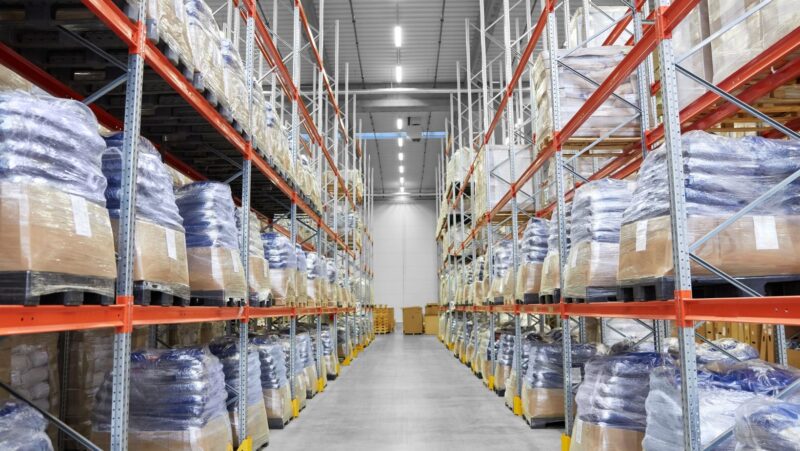Staying ahead in the fast-paced world of warehousing and fulfilment services requires an understanding of the latest trends. As technology evolves and consumer expectations shift, warehouses must adapt to remain competitive. Improving efficiency through automation and robotics is becoming a cornerstone of modern warehousing, enabling faster and more accurate operations.
Direct-to-consumer fulfillment is also gaining momentum due to the rising popularity of online shopping. Many warehousing companies are now adopting hybrid models to serve both business-to-business and direct-to-consumer markets. Warehouses like the Ops Engine warehouse management in LA offer comprehensive services that integrate both fulfillment and distribution, ensuring that businesses meet diverse customer needs efficiently.
Another significant trend is the creation of on-demand warehousing to tackle storage capacity challenges brought on by the surge in eCommerce. By providing flexible storage solutions, these services help businesses manage their inventory without the burden of long-term commitments, keeping costs manageable while adapting to market demands.
Smart Warehousing
Smart warehousing incorporates advanced technologies to improve efficiency, accuracy, and safety. Key technologies include the Internet of Things (IoT), artificial intelligence (AI) and machine learning, as well as robotics and automation.
Internet of Things (IoT) and connectivity
IoT connects devices and systems within a warehouse, allowing them to communicate and share data in real-time. This connectivity enables better inventory management, as sensors and RFID tags track items throughout the warehouse.
IoT devices also help monitor environmental conditions such as temperature and humidity, ensuring products are stored under optimal conditions. Predictive maintenance is another benefit, with IoT sensors alerting you to potential equipment failures before they occur, reducing downtime and maintenance costs.
Artificial Intelligence and Machine Learning
AI and machine learning improve decision-making processes within a warehouse. These technologies analyze vast amounts of data to optimize inventory levels, forecast demand, and improve route planning for picking and packing.
AI-powered systems can automate repetitive tasks, freeing up human workers for more complex activities. You can also use machine learning algorithms to predict market trends, helping you to maintain the right stock levels and reduce waste.
Robotics and Automation
Robotics play a significant role in smart warehousing by automating manual tasks. Automated guided vehicles (AGVs) transport goods within the warehouse, reducing the need for human labor and increasing efficiency. Robotic arms can handle repetitive tasks such as picking, packing, and sorting, ensuring accuracy and speed.

Automation systems streamline operations, with conveyors and sorting systems moving products quickly through the warehouse. By reducing human intervention in dangerous tasks, robots improve workplace safety and reduce the risk of injuries.
Sustainability in Warehousing
Sustainable warehousing focuses on reducing environmental impact through energy-efficient practices, waste-reduction strategies, and sustainable packaging solutions. These initiatives not only help in preserving the environment but also improve operational efficiency and cost savings.
Energy-Efficient Practices
Energy-efficient practices involve the use of renewable energy sources and optimizing energy consumption within warehouse operations. Many warehouses now use solar panels to generate electricity, reducing reliance on non-renewable sources. Implementing LED lighting and automated lighting systems helps save significant amounts of electricity by ensuring lights are only on when needed. Additionally, incorporating energy-efficient HVAC systems can optimize temperature control without excessive energy use. Smart energy management systems allow for monitoring and controlling energy use more effectively, paving the way for more sustainable operations.
Waste Reduction Strategies
Waste reduction in warehousing involves minimizing waste production and improving waste management processes. One common practice is recycling packaging materials, such as cardboard and plastic. Warehouses also aim to use reusable containers instead of single-use ones. Inventory management systems help reduce overstock and expired goods, which might otherwise end up as waste. By incorporating paperless systems, warehouses can cut down on paper waste significantly. Proper disposal and waste sorting practices guarantee dangerous materials are handled safely and recyclable materials are processed correctly.
Sustainable Packaging Solutions
Sustainable packaging focuses on using materials and methods that are less harmful to the environment. Using biodegradable and compostable packaging materials helps reduce the amount of waste that ends up in landfills. Recyclable packaging is another key strategy, including the use of recycled paper and plastics. Additionally, optimizing packaging design to reduce material use without compromising protection is crucial. Eco-friendly inks and adhesives are gaining popularity as they are less toxic and easier to recycle. Implementing these solutions in warehousing guarantees that the packaging process contributes positively to environmental sustainability.

These efforts in energy efficiency, waste reduction, and sustainable packaging are crucial for creating a more environmentally friendly warehousing industry. They not only reduce carbon footprints but also help companies meet regulatory requirements and improve their public image.
Conclusion
Staying updated on the latest trends in warehousing and fulfilment services is crucial. Embracing new technologies like robotics, automation, and data-driven insights can significantly boost efficiency and reduce costs. Moreover, focusing on sustainability and advanced analytics helps optimize operations and meet evolving customer demands. Keeping a keen eye on these trends will guarantee your business remains competitive and efficient.

